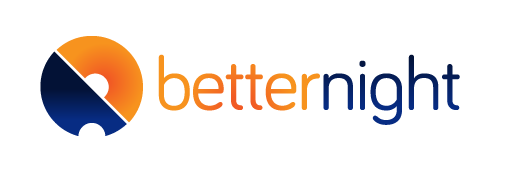The OSA Diagnosis Journey
Sleep apnea is characterized by repeated cycles of paused breathing that occur throughout the night, resulting in reduced blood oxygen levels. This oxygen desaturation is associated with serious comorbidities, including cardiovascular disease, high blood pressure, and diabetes. According to the American Sleep Apnea Association, 22 million American adults (or 20% of the population) suffer from sleep apnea, yet 80% go undiagnosed. The journey from screening to diagnosis and treatment has been further complicated by inefficient and costly silos of care. Patients are often referred to nonaligned specialists, consultants, and labs which inhibit coordinated care, leading to higher costs and poor outcomes. The good news is that new screening methods and telehealth solutions are improving the patient experience and health outcomes.
Once a patient shows sleep apnea symptoms and has visited their primary care physician, diagnostic screenings are the next step. These screenings vary in price and complexity, but all aim to further define a patient’s level of sleep apnea risk. Polysomnography, also known as a sleep study, is a complete series of tests used to diagnose sleep disorders. Polysomnography is considered the gold standard in sleep apnea diagnosis and is conducted with an attending sleep specialist in a clinical setting, usually a hospital or sleep center. While a sleep study measures everything from blood oxygen levels to heart rate and breathing, it can be expensive. Because of polysomnography’s high cost, another option may be a home sleep test, in addition to other predictive questionnaires used for screening patients at the highest risk for obstructive sleep apnea.
The first screening is called STOP Bang. This eight-question screening helps to determine risk levels for sleep apnea. The STOP acronym is associated with these questions: Do you Snore? Are you Tired? Has anyone Observed you gasping for air? Do you have High Blood Pressure? The Bang acronym questions are: Is your Body Mass over 35kg? Are you Age 50 or older? Is your Neck size large? And is your Gender Male? Answering “yes” to 0-2 questions indicates a low risk of OSA, answering “yes” to 3-4 questions indicates an intermediate risk, and answering “yes” to 5-8 questions indicates a high risk for OSA.
Another screening tool used to determine OSA risk is the NoSAS (Neck circumference, Obesity, Snoring, Age, Sex) score, developed in Lausanne, Switzerland. Similar to STOP Bang, this measurement determines the level of risk by assigning a score based on answers to OSA-related questions. A patient has a high probability of OSA if they have a NoSAS score of 8 or higher.
The sleep healthcare system has proven to be fragmented, involving multiple sleep specialists who are neither aligned nor coordinated in their care efforts. This fragmentation leads to a high rate of OSA patients who never go for initial treatment or quit shortly after they start. Once the level of sleep apnea is diagnosed, patients are sent to a sleep specialist who will discuss treatment options. Because most physicians are not specialists in sleep medicine, and because the system does not have alignment between these specialties, the research and follow-up often fall on the patient. When a treatment plan is provided, the patient is often sent to a DME provider, another disconnected silo in the healthcare system.
Luckily, advances in telemedicine have helped consolidate sleep apnea screening, diagnosis, and treatment into a coordinated “one-stop-shop,” providing a complete continuum of care. BetterNight, the leading provider in sleep health care for over 25 years, is a fully integrated telehealth sleep solution that works seamlessly with a patient’s primary care provider. They offer a simple 6-minute health assessment that identifies the sleep health condition, and if it is determined that the patient is at medium to high risk for sleep apnea, a telehealth consult is set up. BetterNight will then coordinate a home sleep test and, depending on the results, will send out the appropriate oral appliance. Unlike the disconnected providers that are currently included in the treatment of sleep apnea, BetterNight employs over 200 physicians and sleep specialists, including Board-registered polysomnographic technicians, respiratory therapists, Cognitive Behavioral Therapy counselors, and data analysts.
Perhaps most importantly, BetterNight communicates with the primary care physician, connecting all providers in the patient’s care program. BetterNight also provides counseling directly to the patient, so there is transparency, expert communication, and connection between all phases of the care journey. Once an OSA diagnosis is confirmed, the appropriate oral appliance is prescribed. Continuous Positive Airway Pressure machines, better known as CPAP, are the gold standard in obstructive sleep apnea care. CPAP uses pressurized air that flows through a mask and tubing, resulting in continually opened airways. Adapting to an oral appliance can be both daunting and confusing for patients, especially for a newly diagnosed OSA sufferer. Betternight’s proprietary data analysis software, aptly named Clarity, gathers and stores data from the appliance and can create patient-specific reports to hand off to physicians, allowing for greater transparency in care.
Clarity is able to look at behavior change and where patients may be struggling. Clarity can identify patients who will benefit the most from CPAP therapy and reach them proactively while behavior change is happening. This “human enabled technology” allows BetterNight’s team of highly trained respiratory technicians and sleep coaches to be alerted to usage and connect with their patients in real-time to help motivate and re-educate. It’s this combination of technology and skilled personal coaching that sets BetterNight apart and accounts for their high compliance percentage.
A patient’s journey from screening to diagnosis to treatment of sleep apnea can be overwhelming. Luckily, the BetterNight sleep solution provides a proven system that is convenient and fully integrated. Patients get personal, individualized care leading to better outcomes and healthier lives.
To learn more about how BetterNight can help you provide more effective and efficient care to your at-risk sleep apnea patients, contact us.

